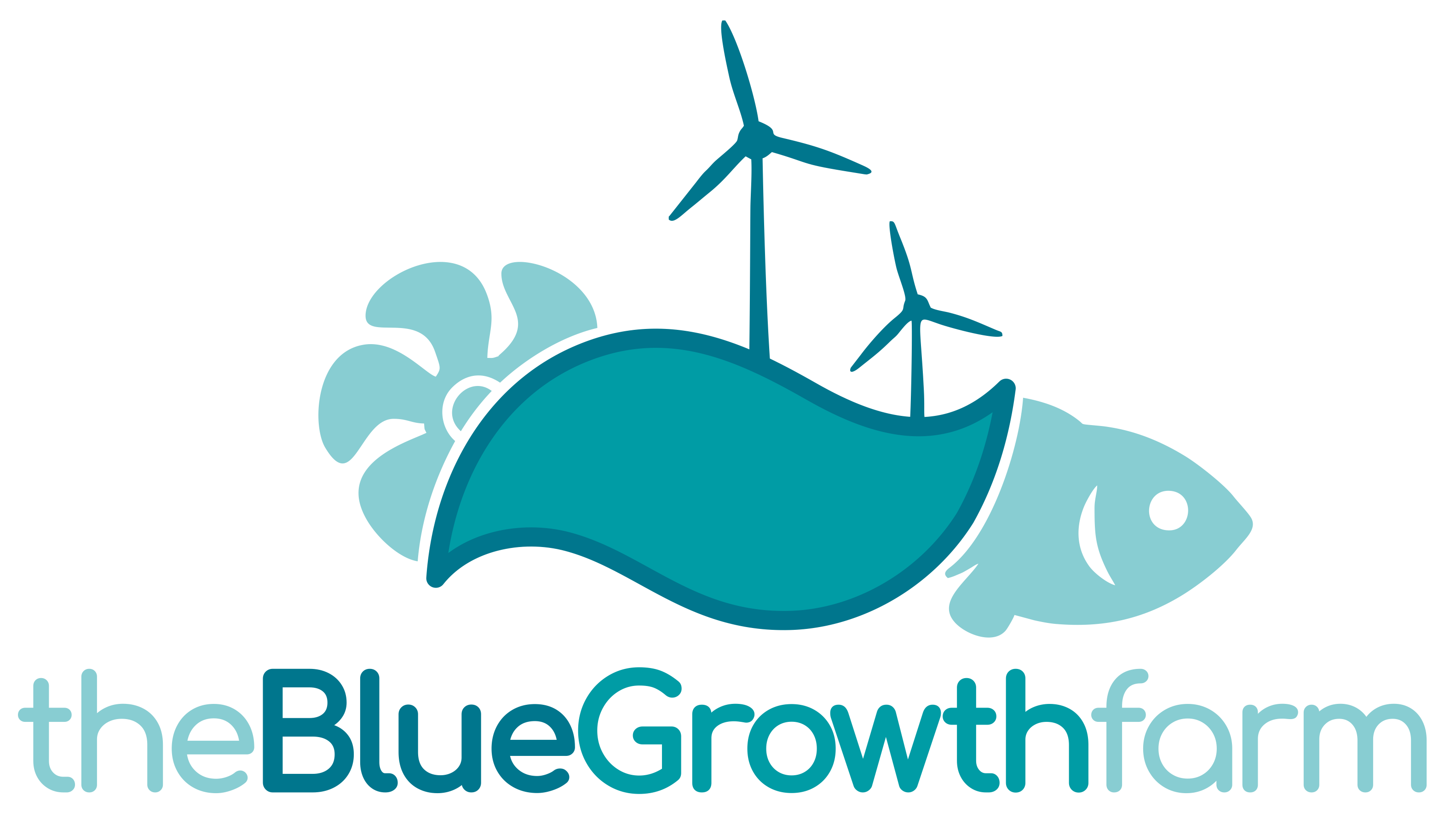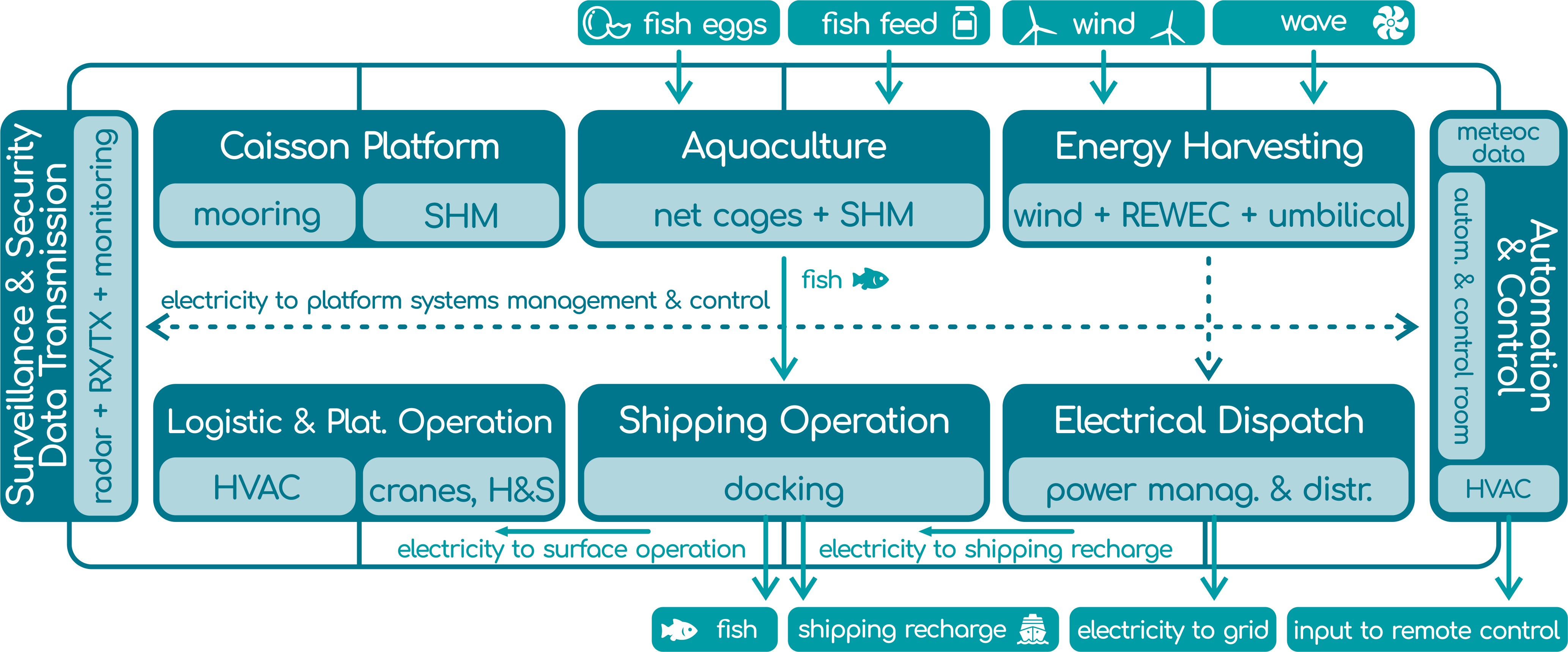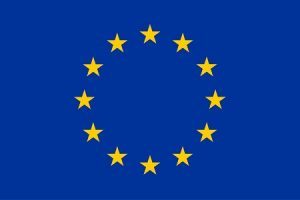The Blue Growth Farm (BGF) project aims to develop and validate the design of an automated, modular and environmentally friendly multi-functional platform for open sea farm installations of the Blue Growth Industry.
The concept of developing multi-use sea platforms has become one of the EU’s most interesting and ambitious projects to ensure the integrated, sustainable exploitation of open sea resources.
In particular, a suitable combination of aquaculture and offshore renewable energy production and the application of the appropriate technical knowledge are key in achieving the sustainable exploitation of marine resources, in support of the growing global demand for seafood and energy from renewable sources.
The aim of the Blue Growth Farm project is thus to progress on research and engineering knowledge regarding a fully integrated and efficient offshore multipurpose floating platform, which provides a central protected pool to host an automated aquaculture system, capable of producing high quality fish, as well as a large storage and deck areas to host a commercial 10 MW wind turbine and a number of wave energy converters (WECs). The platform results from the suitable assembly of low-cost, corrosion-resistance, low-maintenance concrete caissons based modules.
Relevant R&D challenges are addressed in the project with the specific strategy of validating numerical design tools by fine tuning with experimental results obtained through different scale prototype solutions, namely a 1:40 model for Centrale Nantes (FR) wave tank testing and a 1:15 model for open sea testing at the Natural Laboratory of Ocean Engineering (NOEL) (IT), thus enabling reliable predictions capacity for design of the full-scale infrastructure.
Final project achievements are represented by:
- the design assessment of the fully integrated multipurpose offshore floating platform, hosting aquaculture, energy harvesting, automation and control, security and surveillance, electrical dispatch, shipping operations, logistics and platform operations services;
- the detailed design, construction, commissioning and testing of a low scaled model (1:40) of the platform to produce experimental evidence under wave tank conditions;
- the detailed design, construction, commissioning and operation of an intermediate scale* physical prototype (~1:15) of the platform to provide the required experimental evidence in the relevant environment, in order to demonstrate achievement of TRL 5 requirement;
- a suitable business model and plan built on the Blue Growth Farm configuration to validate project assumptions and open up opportunities to future investment.
Composition of the Blue Growth Farm system
The Blue Growth Farm is an efficient, cost-competitive and environmentally friendly multi-purpose offshore farm based on a modular floating structure, moored to the seabed, meeting requirements of efficiency, cost-competitiveness and environmental friendless, where aquaculture and renewable energy production systems are integrated and engineered for profitable applications in the open sea.
The design basis is founded on an economical structural conceptual layout, from seabed to surface and topsides, capable of delivering a robust, reliable, low maintenance and easy to install construction. For these reasons, the conceptual approach at the base of the Blue Growth Farm project is based on these pillars:
- guaranteeing a nominal 2.000t/y fish production, operating with advanced automation and remote control capabilities;
- minimizing the introduction of pollutants to the ecosystem when exploiting the marine natural resources;
- maximizing the electricity production in selected potential deployment areas for the Blue Growth Farm, guaranteeing energy supply to onboard electrical equipment, supplying any extra electric energy produced to the local grid and providing a sea based recharging service to electrical or hybrid powered shipping.
The Blue Growth Farm overall composition is illustrated in the following block diagram:


